- Flaky, itchy eyebrows? You might have eyebrow seborrheic dermatitis, also known as eyebrow dandruff.
- Malassezia yeast is often the culprit. Learn why this common fungus can cause dandruff in your brows.
- Effective treatments exist! Discover shampoos, creams, and natural remedies to manage eyebrow dandruff.
- Long-term management is key. Find out how to prevent eyebrow dandruff from returning.
- Improve your skin barrier. A healthy skin barrier can reduce sensitivity and symptoms.
This is your complete guide to understanding and treating eyebrow seborrheic dermatitis, commonly known as eyebrow dandruff. We’ll cover everything you need to know to manage this condition and achieve healthy, flake-free eyebrows.
In this article, you’ll learn:
- What eyebrow seborrheic dermatitis (dandruff) is
- The primary causes of eyebrow dandruff
- Why eyebrows are prone to this condition
- Proven treatments and how to use them effectively for your eyebrows
This guide provides the essential information to help you take control of your skin health. If you have questions or suggestions, please leave a comment below!
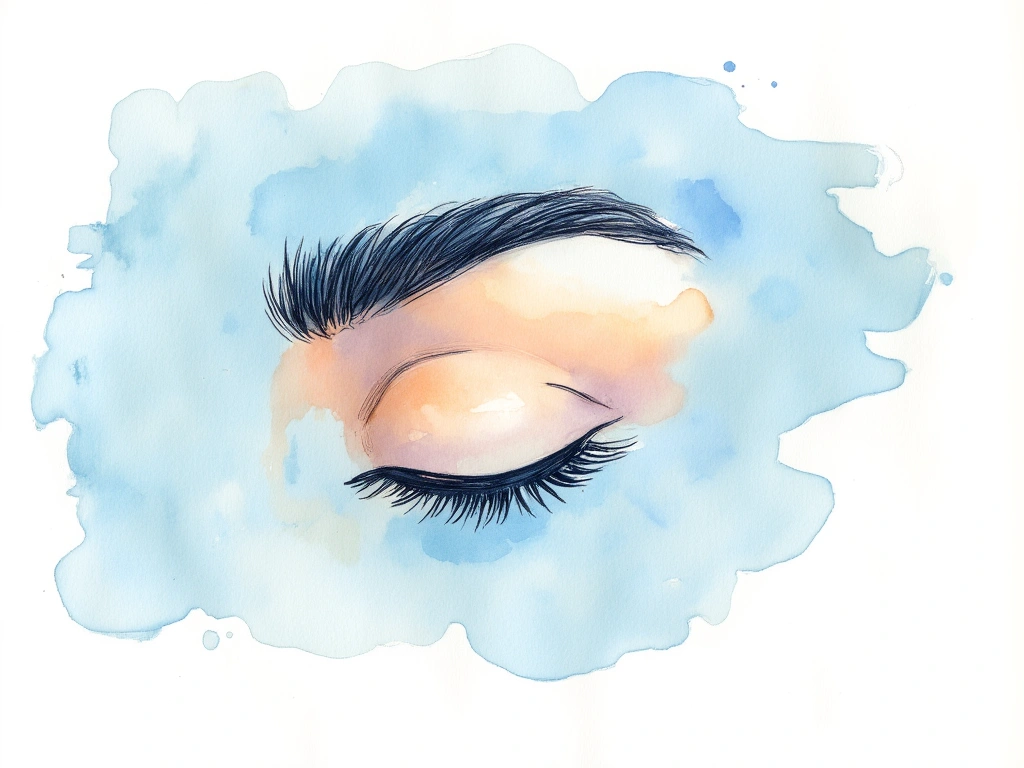
Understanding Eyebrow Seborrheic Dermatitis (Dandruff)
Seborrheic dermatitis, or dandruff, is a common skin condition that can affect people of all ages. It typically appears as red, flaky patches that can be oily or dry. Eyebrows are a common area affected by this condition.
Seborrheic dermatitis and dandruff are often the same thing.
“Seborrheic dermatitis” is the medical term, while “dandruff” is more commonly used, especially when referring to the scalp. In this article, we’ll use these terms interchangeably.
The Role of Malassezia Yeast
Most experts believe that seborrheic dermatitis and dandruff are triggered by Malassezia yeast. This fungus thrives in oil-rich areas of the skin because it’s lipophilic, meaning it needs oils (lipids) to survive.
Malassezia is naturally present on almost everyone’s skin. However, in some individuals, it can lead to skin problems like seborrheic dermatitis. Researchers are still exploring why some people develop this condition while others don’t.
Why Some People Get Eyebrow Dandruff and Others Don’t
Several factors seem to increase the likelihood of developing seborrheic dermatitis and dandruff:
- Increased Malassezia Density: The amount of Malassezia on the skin tends to increase significantly in adults after puberty, decreasing in later middle age [1].
- Changes in Sebum Composition: Normally, sebum contains about 13% free fatty acids. When Malassezia is present, this can rise to 32% [2].
- Sebum Differences: People with seborrheic dermatitis often have different sebum compositions compared to healthy individuals. Their sebum may have higher levels of triglycerides and cholesterol, and lower levels of squalene and free fatty acids [3].
- Sensitivity to Fatty Acids: Some individuals are more sensitive to specific free fatty acids, particularly oleic acid, produced by Malassezia [4].
- Fatty Acids Trigger Symptoms: Even without the presence of the fungus itself, the free fatty acids produced by Malassezia can trigger seborrheic dermatitis in susceptible people [5].
It appears that some people’s skin simply reacts negatively to the byproducts of Malassezia‘s feeding process. However, the exact reasons for this individual sensitivity are still unclear.
What’s the Root Cause?
Is it that people with seborrheic dermatitis produce sebum that’s more easily consumed by Malassezia? Or is their skin barrier weaker, overreacting to the free fatty acids produced by Malassezia? The answer may be a combination of both.
Why Eyebrows Are Prone to Seborrheic Dermatitis
While the scalp is the most commonly affected area [6], seborrheic dermatitis frequently occurs in the eyebrows, ears, nasal folds, cheeks, and chest [].
The reason these areas are more susceptible is due to the higher concentration of sebaceous glands in these locations.
These glands secrete sebum, a rich mixture of oils, wax esters, and squalene [8]. The abundance of sebum in these areas creates an ideal environment for Malassezia to thrive, making them prone to seborrheic dermatitis and dandruff.
This is a simplified explanation, but it covers the basics. For a deeper dive into the mechanisms behind seborrheic dermatitis and dandruff, see “What is Seborrheic Dermatitis“.
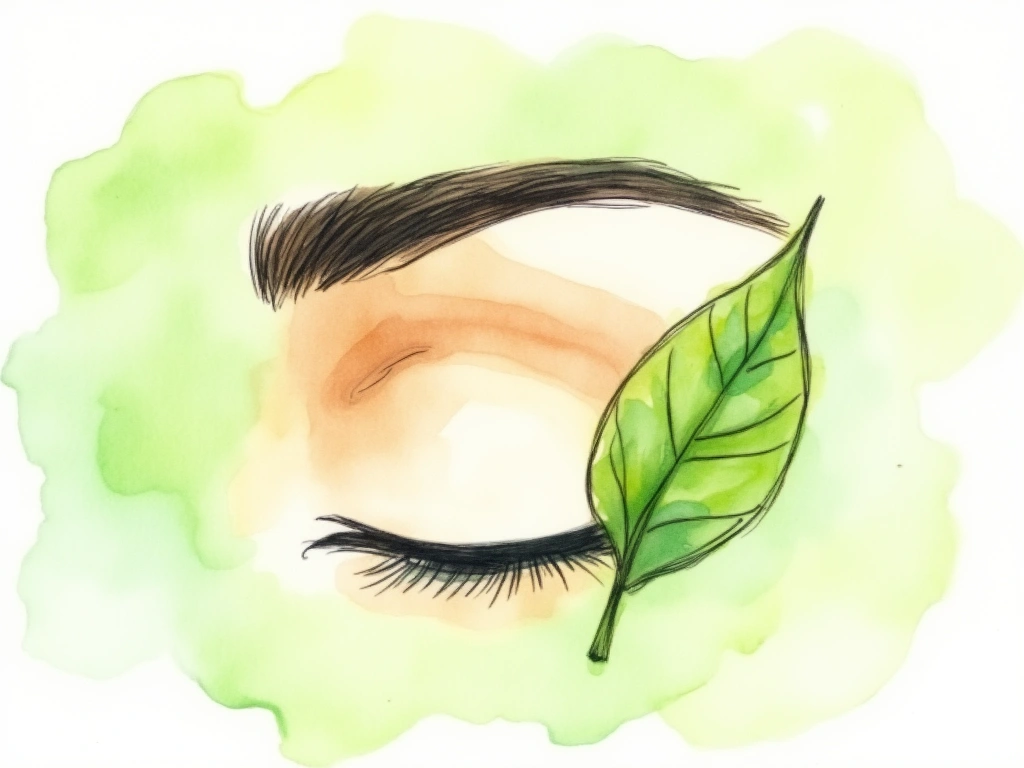
Effective Treatments for Eyebrow Seborrheic Dermatitis
Let’s explore the most effective treatment options for eyebrow seborrheic dermatitis.
Understanding Treatment Approaches
You’ll find countless suggested treatments for eyebrow dandruff online, many without scientific backing. Herbal remedies, oils, supplements, and dietary changes are often promoted, but experience shows that only a few approaches consistently provide relief.
Some effective treatments are lab-synthesized and found in commercial products. Others are natural options that can be equally helpful with fewer potential side effects.
Pyrithione Zinc
Pyrithione zinc is a widely used and well-researched treatment for dandruff and seborrheic dermatitis. It’s a metal complex with antifungal properties, developed in the 1930s.
A significant benefit of pyrithione zinc is that it may also stimulate hair growth [], which is discussed further in this post: Reversing Seborrheic Dermatitis and Hair Loss.
Pyrithione Zinc Shampoos for Eyebrow Dandruff
Pyrithione zinc is readily available in shampoos, most famously in Head and Shoulders, but many other brands now offer similar dandruff shampoos.
To use a pyrithione zinc shampoo on your eyebrows:
- Apply a small amount to your eyebrow.
- Gently massage it into the skin.
- Leave it on for a few minutes.
- Rinse thoroughly with water, being very careful to avoid getting shampoo in your eyes, as it can cause irritation.
Pyrithione Zinc Creams
Pyrithione zinc creams are also available, though less common and often found online. Creams can be more beneficial than shampoos in certain situations:
- Extended Application: When you need the treatment to stay on the skin throughout the day for more persistent cases.
- Shampoo Irritation: If shampoo surfactants (cleaning agents) irritate your skin.
Personal Experience with Pyrithione Zinc
While pyrithione zinc is often successful for scalp dandruff, my experience with eyebrow dandruff was less consistent.
Initially, Head and Shoulders shampoo (2-in-1 Classic) worked quickly, clearing up my eyebrow dandruff within days. This was a welcome change after trying doctor-prescribed hydrocortisone, antibiotic, and clotrimazole creams with limited success.
However, the relief was short-lived. After 1-2 weeks, the shampoo’s effectiveness faded, and the eyebrow dandruff returned, along with seborrheic dermatitis on other facial areas.
I tried pyrithione zinc again later with different products, including a cream and Noble Formula soap from Amazon. The results were similar: initial improvement followed by a return of symptoms.
Selenium Sulfide
Selenium sulfide is another popular antifungal ingredient in anti-dandruff shampoos, with Selsun Blue being the most well-known. Many brands, including Head and Shoulders, offer selenium sulfide shampoos.
Selenium sulfide is often marketed as a stronger alternative to pyrithione zinc (Head and Shoulders calls their version “clinical strength”). However, studies show their effectiveness is comparable [9]. Despite this, some people find selenium sulfide helpful when pyrithione zinc fails.
Using Selenium Sulfide Shampoo for Eyebrow Seborrheic Dermatitis
Using selenium sulfide shampoo on your eyebrows is similar to using pyrithione zinc shampoo:
- Massage a small amount into the eyebrow skin.
- Leave it on for a few minutes.
- Rinse thoroughly with water, taking care to avoid eye contact.
Safety Considerations for Selenium Sulfide
Selenium sulfide may have a less favorable safety profile compared to pyrithione zinc and ketoconazole [10], with a higher potential for side effects [11]. Selenium sulfide creams are uncommon, suggesting it may not be suitable for prolonged skin contact.
Due to these factors, I haven’t personally used selenium sulfide products. If considering it, start cautiously, testing on a small skin area and carefully monitoring application time.
Ketoconazole
Ketoconazole is a well-documented dandruff treatment developed in 1976 to improve upon existing azole antifungals [12].
It’s available in shampoos, creams, and even oral tablets. Clinical trials indicate it’s more effective than both pyrithione zinc and selenium sulfide [13].
Ketoconazole Shampoos for Eyebrow Seborrheic Dermatitis
Nizoral shampoo is a popular ketoconazole product, widely available over-the-counter in North America. Other ketoconazole shampoos are also available.
Using ketoconazole shampoo for eyebrow dandruff is similar to other antifungal shampoos:
- Apply a small amount to your eyebrows.
- Massage gently into the skin.
- Leave on for a few minutes.
- Rinse thoroughly, avoiding eye contact.
Ketoconazole Creams
Ketoconazole creams are also available, but less common and typically require a prescription. Follow the specific instructions provided with the cream, as they may vary based on concentration and other ingredients.
Ketoconazole Safety
Recent research has highlighted potential liver risks associated with oral ketoconazole, outweighing its benefits []. This led to bans in some countries (China, Australia) and reduced oral prescriptions in the USA (FDA withdrawal for Candida and dermatophyte infections).
Despite concerns about oral use, topical ketoconazole remains widely used. Studies suggest it has fewer side effects than selenium sulfide when applied topically [14].
Personal Experience with Ketoconazole
My experience with Nizoral shampoo for eyebrow dandruff was brief due to skin dryness and hair texture changes.
Despite high hopes based on research, Nizoral was too drying for my skin and made my eyebrow hairs feel very brittle.
Coal Tar
Coal tar is another antifungal agent with a history of use spanning over 2000 years [15]. It’s found in shampoos, creams, soaps, and lotions.
Coal tar is a complex byproduct of coal production, containing over 10,000 compounds [16]. It’s effectiveness against Malassezia is comparable to ketoconazole [17]. However, it’s less popular in the scientific community for seborrheic dermatitis treatment, possibly due to its strong odor, potential irritation (tar folliculitis, contact dermatitis), and possible carcinogenic properties [18].
Coal Tar Shampoos for Eyebrow Seborrheic Dermatitis
Neutrogena T-Gel shampoo is a popular coal tar product, available over-the-counter in North America. Many other coal tar shampoos are available online.
Using coal tar shampoo on eyebrows is similar to other antifungal shampoos:
- Apply to the eyebrow skin.
- Leave on for a few minutes.
- Rinse thoroughly, avoiding the eyes.
Coal Tar Creams and Lotions
Coal tar creams and lotions are also widely available.
Leaving coal tar on the skin longer could enhance its antifungal effects. However, its dark color and staining potential, along with its odor, might make it less practical for daytime use on the face.
Personal Experience with Coal Tar
Coal tar provided the most impressive results among the treatments I tried. Neutrogena T-Gel effectively controlled flaking and inflammation on my eyebrows without excessive dryness.
I used T-Gel to manage facial seborrheic dermatitis for several months with good results. However, I became concerned about potential long-term effects, as it seemed to make my skin sensitive and pale.
Topical Steroids (Corticosteroids)
Corticosteroids are steroid hormones that regulate various bodily functions, including immune responses. Synthesized corticosteroids are used to treat skin conditions.
Hydrocortisone, a low-potency corticosteroid, is often prescribed for seborrheic dermatitis and dandruff, including on the eyebrows [19].
Risks of Long-Term Hydrocortisone Use
Topical steroids are popular because they can provide rapid relief. However, long-term use has significant risks:
- Skin Atrophy: Breakdown and thinning of skin cells.
- Telangiectasias: Appearance of small, spider-like veins near the skin surface.
- Perioral Dermatitis: Small, itchy bumps and skin irritation around the mouth.
Therefore, hydrocortisone is recommended for short-term use only. Since eyebrow seborrheic dermatitis often requires ongoing management, hydrocortisone may not be a sustainable long-term solution [20].
Personal Experience with Hydrocortisone
Hydrocortisone cream was among the first treatments I tried for seborrheic dermatitis, before I even knew what it was.
It quickly cleared up a small flaky patch on the side of my nose within a week. However, the problem returned as soon as I stopped using it. Aware of the risks of long-term use, I avoided hydrocortisone products afterward.
Raw Honey
Honey has been recognized for its antimicrobial and wound-healing properties throughout history [21]. It’s readily available, generally well-tolerated, and edible.
Raw honey, unfiltered and containing natural wax, is believed to have enhanced antimicrobial benefits for skin issues.
A small study in 2001 demonstrated raw honey’s effectiveness against seborrheic dermatitis [], and many online users report positive results.
Using Raw Honey for Eyebrow Dandruff
To use raw honey:
- Dilute raw honey with warm water (90% honey, 10% water) to make it easier to apply.
- Spread the mixture on your eyebrows.
- Leave it on for 2-3 hours.
- Rinse off with cool water.
Repeat this every other day for several weeks. For maintenance after symptoms improve, apply twice a week.
Important notes on honey treatment:
- Excess water can reduce honey’s antimicrobial properties [22].
- Antimicrobial activity varies between different types of honey [23], so some may be more effective than others.
- Honey’s antimicrobial action is largely due to its production of topical hydrogen peroxide [24].
Personal Experience with Raw Honey
Raw honey was quite effective for my eyebrow dandruff. After several treatments, flaking subsided, and my skin appeared normal.
The main drawbacks were the inconvenience of having sticky honey on my face for hours and the stickiness causing eyebrow hair removal during application and removal.
Caprylic Acid Triglycerides
Caprylic acid is a medium-chain fatty acid found in coconut and palm kernel oils. It’s widely used in cosmetics in moisturizers, cleansers, shampoos, and ointments.
While not a medically recognized dandruff treatment, caprylic acid triglycerides have shown significant antifungal activity against Malassezia [25]. Products with sufficient caprylic acid may help manage dandruff.
Personal Experience with Caprylic Acid Triglycerides
After Cetaphil Restoraderm products, which had previously worked well, became less effective, I investigated their ingredients. I suspected caprylic acid triglycerides might be the key ingredient behind their initial success.
Based on this, I experimented with creating formulations containing varying concentrations of caprylic acid triglycerides. This led to a formula that exceeded my expectations and has been my preferred solution since 2015.
Details about this formulation are in this article: My Seborrheic Dermatitis Skin Regimen 2.0.
Nystatin
Nystatin was brought to my attention by a SkinDrone community member, Joakim (thank you, Joakim!).
Discovered in 1950, nystatin is an antifungal medication considered essential by the World Health Organization. It’s not commonly used for seborrheic dermatitis and dandruff in mainstream medicine, as other antifungals are often preferred.
However, nystatin is effective against Malassezia [], and user feedback suggests it can be a valuable alternative to other antifungals.
Obtaining Nystatin Cream
Nystatin preparations are not always readily available and often require a prescription. Consulting a doctor may be necessary.
However, SkinDrone readers have reported purchasing nystatin cream online through platforms like Amazon or eBay. While the legality of this is uncertain, it might be considered.
Important Notes on Nystatin
- Some Malassezia species may be resistant to nystatin [26].
- The original suggestion for nystatin treatment is here: Nystatin A Potential Seborrheic Dermatitis Treatment
Other Potential Eyebrow Dandruff Treatments
Many less common treatments exist. While not covered in detail here, they are listed for reference, with links to relevant posts where available:
- Apple Cider Vinegar
- Sea Salt
- Baking Soda
- Other Azole Antifungals (Bifonazole, Miconazole, Fluconazole, etc.)
- Ciclopirox
- Terbinafine
- Lithium Succinate
- Benzoyl Peroxide
- Propylene Glycol
- Sulfur
General Tips for Treating Seborrheic Dermatitis Around the Eyes
Most seborrheic dermatitis treatments involve antifungals. Therefore, avoiding eye contact during treatment is crucial.
Additional tips:
- Wash hands thoroughly before and after each treatment.
- If leaving a solution on, keep a napkin handy to wipe away any drips towards your eyes.
- For strong-smelling solutions, avoid getting too close to your eyes, as the odor itself can cause irritation.
- “Natural” doesn’t always mean “safe.” Exercise caution with all treatments, regardless of their natural origin.
- When starting a new treatment, always patch-test on a small, less visible area away from your eyes first.
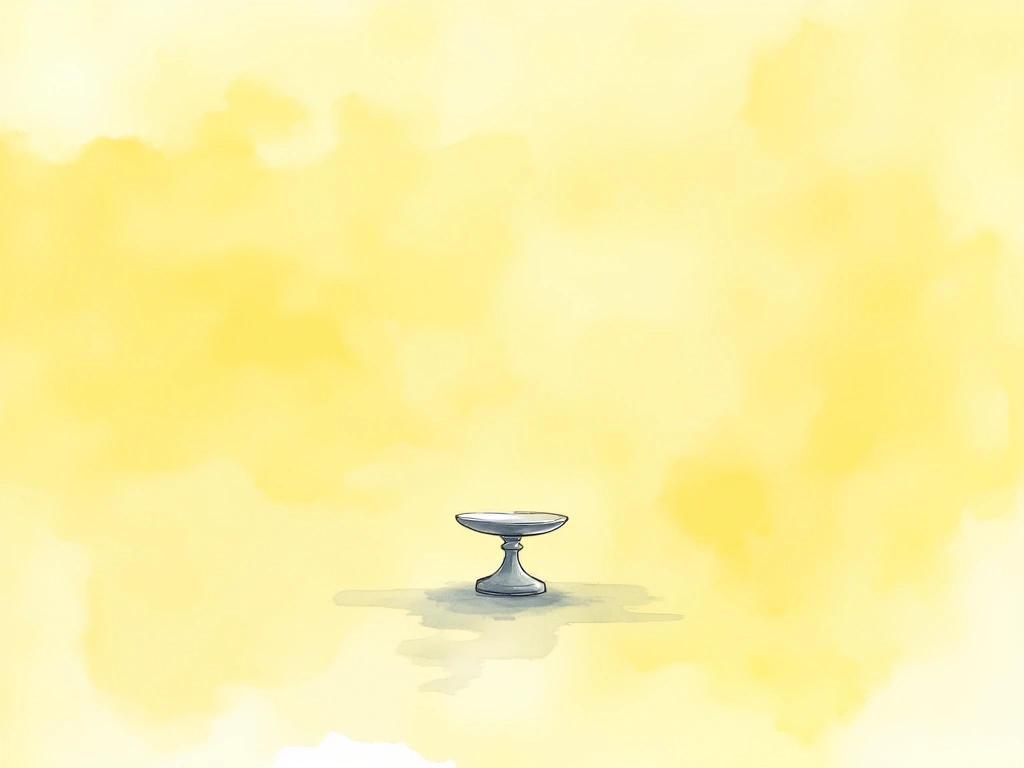
Additional Considerations for Managing Eyebrow Dandruff
Beyond directly targeting Malassezia, other factors can be important in managing eyebrow seborrheic dermatitis, especially for long-term control.
Minimizing Hair Loss/Shedding
Prolonged eyebrow dandruff can lead to hair loss. Stimulating hair growth can help reverse this.
Key points from a related article on hair loss:
- Pyrithione zinc and ketoconazole can promote hair growth.
- Stimulating hair follicles may improve nutrient delivery and hair growth.
- Supplements may be less effective than often claimed, with research mainly focused on deficiency-related hair loss.
- Minoxidil is a popular hair growth product, but consider potential side effects.
See the full article here: Reversing Seborrheic Dermatitis and Hair Loss.
Reducing Sebum Production
Since Malassezia feeds on sebum, reducing sebum output can be beneficial.
Factors influencing sebum production:
- Vitamin A (Retinol) Levels: May help regulate sebum production [27].
- Blood Sugar Fluctuations: High glycemic loads and insulin spikes may increase sebum [28].
- Hormone Levels: Hormones are linked to sebum production, but the relationship is complex and hard to manage [29].
- Dairy Consumption: May increase IGF-1 production, potentially raising sebum levels [30].
More in-depth information is available in the online eBook:
Improving Skin Barrier Function
Malassezia is present on healthy skin, but only causes issues in some people. A compromised skin barrier may increase susceptibility to seborrheic dermatitis.
Strengthening the skin barrier could reduce sensitivity to Malassezia byproducts, the primary irritants in seborrheic dermatitis.
Many skincare products are designed to improve skin barrier function, particularly for facial skin, making them suitable for eyebrow dandruff. Some users report significant improvement using these products alone, without antifungals.
More details are in the SkinSuport program (a step-by-step program for long-term seborrheic dermatitis management): Improving Barrier Function
Popular Skin Barrier Repair Products
Popular skin barrier repair products mentioned online and in website comments include:
- Cetaphil Restoraderm (personally effective)
- Promiseb
- Gold Bond Ultimate Healing Lotion (also used with good results)
- Avene Skin Recovery Cream
- La Roche-Posay Cicaplast Baume B5
- EpiCeram (prescription needed)
Skin barrier cream results can vary. Requesting free samples from pharmacies is a good way to test different products without significant cost.
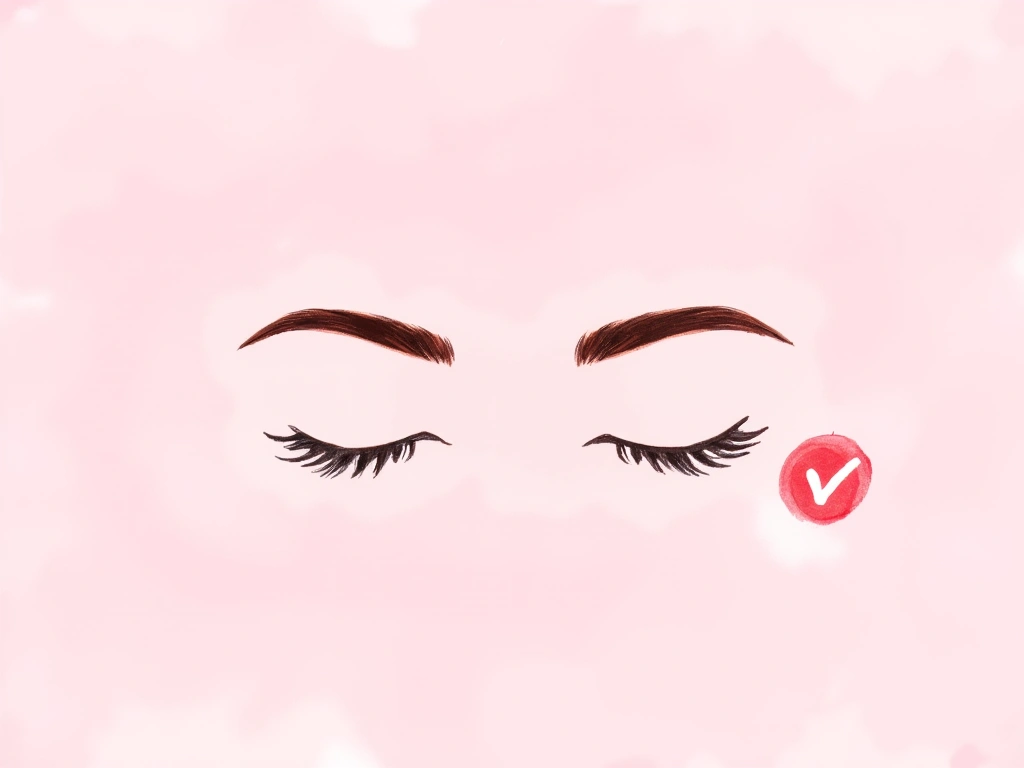
Summary: Key Takeaways for Eyebrow Dandruff
This guide has covered essential aspects of managing eyebrow seborrheic dermatitis (eyebrow dandruff) and reviewed common treatments.
Here are the key points to remember:
- Malassezia fungus is a normal skin resident that feeds on skin oils.
- Dandruff is mainly caused by byproducts of Malassezia (specifically, oleic acid).
- Individual sensitivity to these fatty acids determines dandruff susceptibility.
- Antifungal treatments to control Malassezia offer quick relief and are the most common approach.
- Antifungal treatments often require ongoing maintenance.
- Topical steroids are effective but carry risks with long-term use.
- Reducing sebum production can help control Malassezia.
- Improving skin barrier function can reduce sensitivity to Malassezia byproducts, relieving symptoms without antifungals.
- Combining skin barrier repair with antifungal treatment may provide faster and longer-lasting results.
Hopefully, this article has provided you with valuable information to understand and manage your eyebrow seborrheic dermatitis effectively.
Share your experiences, tips, or recommendations in the comments below!
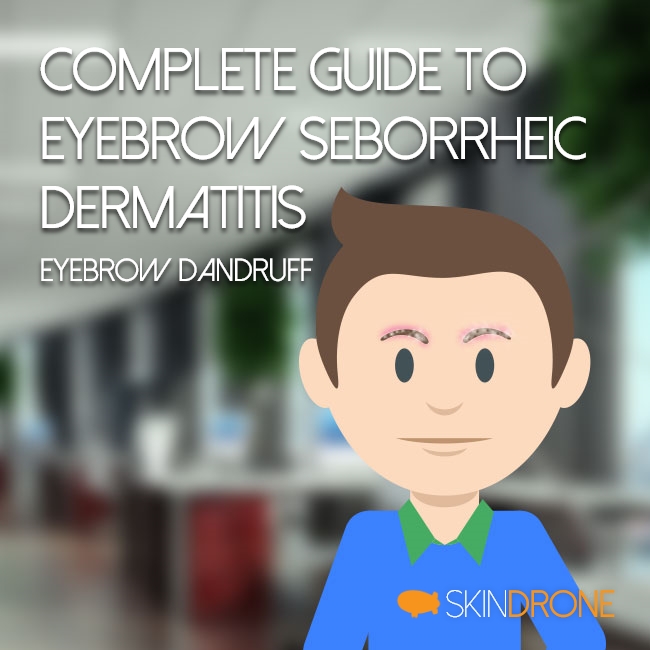
Another great article after the last one! I have to respect how much effort you put on studying seb derm. You have way more knowledge about seb derm than most of the dermatologists.
In my opinion best thing has been Apple Cider Vinegar for eyebrows (so far). Steroids and topical antifungal creams have no effect and shampoos (selenium sulfide, ketaconazole) dry them out too much and I had horrible reaction with head and shoulders. Possibly conditioners could be better for eyebrows than shampoos. It’s really annoying to try different things as most of the times you can’t see positive results right away. It took me a week to realise that ACV is working and not making it worse. ACV is only ok for my facial skin otherwise, most effective on my eyebrows. Definitely recommended.
I’ve lost some of my eyebrows: thinning and shedding around 1-3cm area (inner sides). Not catastrophic yet but noticeable, hopefully ACV stopped it. I think seb derm also boost my male type hair loss in my scalp. I have a lot of thinning and shedding and I don’t really have clear hairline. Before I was able to cover most of the receding hairline as I have nice thick hair otherwise but not that well anymore.
3 years ago I (now 29years) went first time to see dermatologists for hair loss in my hairline. I got ketaconazole, finasterid/procepia, and minoxidil but didn’t really start using them cause my scalp condition got worse, more dandruff and drying. Same time I got redness, very slowly spreading my inner eyebrows and forehead. And now couple years later, still trying to find a cure and keep it under control lol.
I’ve now been 2 weeks on honey treatment. It’s now better than on the 1st week but not cleared up. I actually got better results just with ACV and taking sun but I will continue the honey treatment at least one more week just to be sure (tho I kept using also ACV for eyebrows). I didn’t combine coconut oil because it might feed the yeast. My face seems a bit dry/rough with honey so maybe I should try it. Sun is really good for facial skin but bad for my dry scalp. I live in Asia (thailand) and while I was surfing in Bali 6 months ago, I didn’t have any problem with my facial skin. I think most people would benefit taking sun for their seb derm. Tho usually seb derm areas will get more red at first but finally even out. Sunscreen is probably quite important. Somebody should definitely study which sunscreens are most suitable
One more thing beside taking sun (which i haven’t noticed in your articles) is Climbazole. Im actually using System 4 Scalp tonic (leave it on) (Climbazole, piroctone olamine, salicylic acid) and shampoo. Shampoo is still a lil bit rough, but not as rough as ketaconazole or selenium sulphide. Scalp tonic seems to be good especially for hairline. Might try it also on eyebrows. Probably gonna try your Andalou moisturising shampoo for scalp. I been thinking about trying castor oil and tree tee oil mix on my scalp and eyebrows in hope of reversing or at least stopping the hair loss. Any thoughts about that and how to apply them? That kind of combo shouldn’t be bad for seb derm itself.
I also think to start eating L-Glutamine. My immune system is very weak, maybe because of antibiotics and environmental reasons. Or unhealthy life style before, drinking etc lol. I already eat probiotics (lactobacillus), vitamins, omega 3 fatty acids and a lot of proteins. Now I try to eat even more healthy to see if it has any effect. Long message but any comments are welcome
Reply PermalinkI think that the fact that malassezia feed off of our natural skin oils, they will grow when fed by oils containing fatty acids in general, and not just from our body oils. Malassezia also produces fatty acids as metabolites that cause further problems. All this suggests that any products used for treatment, cleansing, or cosmetics should not contain any fatty acids because that will promote growth of these organisms. Because of this insight, I have personally avoided soap-based cleansers and use only glycerin soap. The delivery vehicle of medications should not contain fatty acids in its suspension. If they do, that may be why certain treatments become ineffective after a while. I also find that my condition flares up if I use cosmetics rich in fatty acids (anything with vitamin E should be avoided because it is suspended in oil) and with added sunscreen. So in my daily routine after I’ve controlled the growth of the organism using whichever method is most effective for me (mostly it is washing with a salicylic acid shampoo), I cleanse with glycerin soap, moisturize with an oil free product such as CeraVe PM, and avoid cosmetic products with fatty acids, especially those that have added vitamin E.
Reply PermalinkFederal fitness correct campaigns in the 20th century were initiated viagra without a doctor prescription and run beside elites more caring with defending against attacks from involvement business groups than with acclaimed mobilization, and grassroots reformers in the labor, cordial rights, feminist, and AIDS activist movements have on the agenda c trick concentrated more on current and incremental changes than on transforming the vigour misery arrangement itself.
Reply PermalinkThis article (and related articles) frequently misuse the words “it’s” and “its”. For example, in the sentence “The majority of research attributes it’s effectiveness to it’s antifungal activity…” both occurrences of “it’s” should be “its.” “It’s” is a contraction of “it is,” which is incorrect in this example. You probably don’t notice these “minor errors” because you’re focused on the scientific correctness. Otherwise your articles are fantastic. I wish I discovered your website sooner.
Reply PermalinkHi, I’ve been suffering from SD (scalp, nose and eyebrow) for a very long time. I tried almost everything on your and other’s blogs and only few things helped a little, but nothing worked long-term.
Then I got frustrated and threw away every shampoo, shower gel, shaving foam, every cream, ointments and I started to shower with clean water and SD from scalp disappeared in a matter of weeks. So I guess it was just an allergy. Nose cleared too, but eyebrows were a different story. It sure did help a little, the redness was weaker, but the dandruff was still there. I tried – again – everything I could find but nothing helped.
Then, few weeks ago, when I was looking for some eczema remedies, I came across a connection between eczema and liver function and found out that Carduus marianus (Silybum marianum) is great for restoring balance in liver. So I bought a tea with that herb and also bought some pills. Over first night, my eczema (after 3 months) was reduced by 50%, and the next day another 50% and so on. Now, after a week, not only the eczema is almost completely gone, but – and that’s the point why I’m writing this to your article – on top of that (besides that it almost completely healed my rosacea, which was already almost healed thanks to increasing my gastric acid levels + besides that dry scalp problems are gone too) – it even healed my eyebrows.
It’s a few days I didn’s see any single dandruff in my eyebrows. Some slight redness showed up though, but I’m sure it’ll disappear as well. So, you never know where the problem begins. I feel that after dealing with my stomach (after that – rosacea reduced by 70 %, sweating decreased by 50 %) and liver (eczema gone, rosacea almost gone, sweating decreased again) I still have something I need to fix, so I’ll try another organs and am curious how it turns out.
Anyway… that’s it, that’s tip from me – try Carduus marianus, maybe it’s your liver and in that case, no ACV or anything like that will provide long-term solution. However, if it is your liver, it’s really simple to balance them and you’ll see results almost immediatelly. So good luck to everyone.
Reply PermalinkI came to your site, as I started to research only because I developed seborrhoeic dermatitis seriously in the last two weeks, but reading your articles has made me understand that I have had it for much longer.
Reply PermalinkThe first was a large amount of dry skin in my ears, and then the eyebrows, side of the nose and nowe across the top of the forehead.
It is very interesting reading your website and being informed by your research, as it has made me realise that the problem increased as I started using more healthy oils and fats in my diet as well as putting Argan oil in my hair.
I also used a moisturiser which contained vitamin E.
All these factors seemed to add to what has developed on my skin.
Thank you for all the information.
I just want to ask if Nizoral shampoo contains steroids? I just found out that there are “steroid shampoo” available in the market but I don’t want to use it. I use Nizoral once a week as maintenance.
Reply PermalinkI am an SD sufferer as well as a grammar fan. I noticed other errors besides “it’s vs. its” and if Michael A. is still posting about this subject (I just started reading his articles/posts today), I would be happy to help him edit his work for free. Also, it doesn’t hurt that I am a retired R.N. with a long work history that started with seventeen years in various infant ICU’s at a major children’s hospital followed by almost eight years of home care for children for the same hospital. I continued working with both children and adults in home care, including home and office-based IV infusions.
Reply PermalinkDear Eduard,
Sorry to hear you’ve had to deal with this frustrating skin condition. From my review, the primary Nizoral formula (1%) does not contain any corticosteroids.
Here are the ingredients for your reference:
Active Ingredient: Ketoconazole 1%
Inactive Ingredients: Acrylic acid polymer (carbomer 1342), butylated hydroxytoluene, cocamide MEA, FD&C Blue #1, fragrance, glycol distearate, polyquaternium-7, quaternium-15, sodium chloride, sodium cocoyl sarcosinate, sodium hydroxide and/or hydrochloric acid, sodium laureth sulfate, tetrasodium EDTA, water
Hope that helps.
Reply PermalinkPlease let me know if you have any other questions.
I don’t know about other things but if your problem is with eyebrow dandruff know that: i virtually eliminated the problem with the following:
If you are one of the lucky few who only has SD on one area, that is likely to be it for you, the solution to your problems draws near. Alas, that is not my case at all, i have mad SD throughout my head and body, so it helps quite a lot but i’m not there yet, just the eyebrows and T area seems to benefit the most from this treatment.
Reply PermalinkHey bro, apakah kamu mencampurkan carduus marianus dengan teh? Saya kurang paham bro . Tolong katakan bagaimana ?
Reply PermalinkAku sangat membutuhkanmu sekarang, plz:(